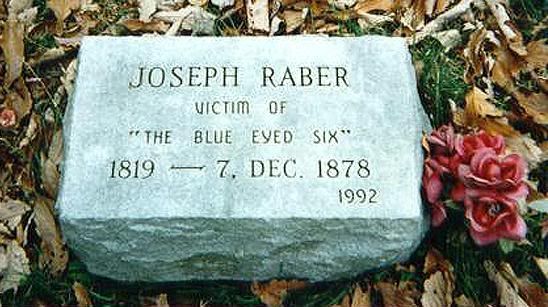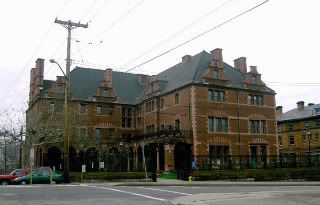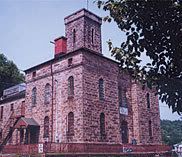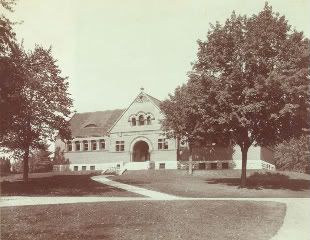
Raber's tombstone from Charles Kindt
Indiantown Gap, in Lebanon County, is the home to the Moonshine Church and Cemetery. There are so many spooks haunting the boneyard that you need a scorecard to keep up with them all.
The most commonly associated phenomena involving Moonshine is that car engines will die as you drive past and unexplained eerie noises heard throughout the grounds. But there's lots more.
There's the legend of a girl who went into the church and said the Lord's Prayer backwards - and was struck dead by lightning. Another tale, unsupported by any local media reports, was that a mother had a nervous breakdown and killed her four kids there before committing suicide in the 1980s.
The small church itself is fairly new, being built in 1961 after the original structure was destroyed by a fire. Hey, who knows - the blaze may have been caused by the same bolt that got the impious young lady. That would be some sweet spooky irony.
It's said that the area is haunted by a headless horseman who, according to regional lore, has been spotted riding up and down the Lebanon Valley. Then there's the ghost most feared by the locals, an Indian spook known as the Red Devil. Several spirits of Native Americans have been reported roaming the cemetery.
The most famous spook may be that of Joseph Raber, the victim drowned by the "blue eyed six" murder gang for insurance money and buried at Moonshine.
When Kelly Weaver of the Paraseekers contacted his spirit while investigating the cemetery, the former laborer expressed amazement that he was being paid so much attention in death when he had so little of it in life.
BTW, none of the perps are haunting the cemetery or are in fact anywhere near it. Five were hung in the Lebanon County jail, and one, George Zechman, was acquitted, dying at home. The six involved were all buried separately by their families elsewhere in the county.
Israel Brandt and Charles Drews are buried side by side in the veteran's section of Mt. Lebanon Cemetery in Lebanon. Josiah Hummel and Zechman are buried at Sattazahn Lutheran Church Cemetery in Union Township. Henry Wise is buried at Evangelical United Brethren Church Cemetery in the village of Green Point. Frank Stichler is buried in the family plot on McLean Road, now within the bounds of Ft. Indiantown Gap, although some say at least one of the killers and maybe others were later reburied at the cemetery.
If there are a pair of blue eyes floating around or peering from the steeple, as often reported, they must belong to another spook or maybe to Raber himself.
Weaver's group also found several spirits roaming the grounds, confirming the tales, at least to the paranormal community.
And if you were wondering, the church grounds weren't named for white lightning but for a local family, the Moonshines, many of whom are buried in the cemetery. The land for the Moonshine Cemetery was donated by Henry Moonshine, who was born in 1760 and died in 1836.
There are "no trespassing" signs posted, so don't plan on any midnight visits unless you're willing to risk your trip concluding in an Indiantown Gap jail cell.





